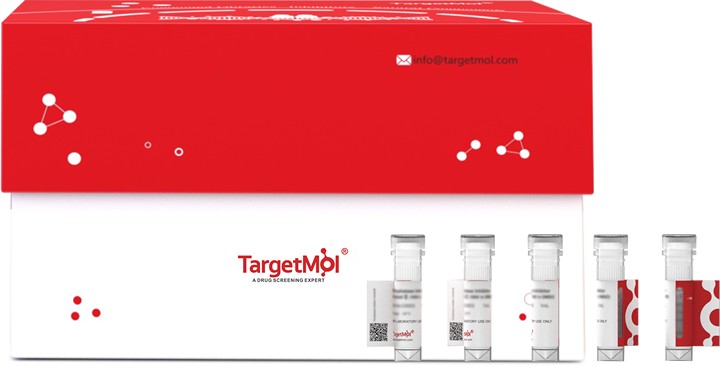Shopping Cart
Remove All Your shopping cart is currently empty
Your shopping cart is currently empty
VEGFR2/KDR Protein, Mouse, Recombinant (aa 192-761, hFc) is expressed in HEK293 Cells. The accession number is P35918.

| Pack Size | Price | USA Warehouse | Global Warehouse | Quantity |
|---|---|---|---|---|
| 10 μg | $35 | 7-10 days | 7-10 days | |
| 20 μg | $52 | 7-10 days | 7-10 days | |
| 50 μg | $95 | 7-10 days | 7-10 days | |
| 200 μg | $555 | 7-10 days | 7-10 days | |
| 500 μg | $1,350 | 7-10 days | 7-10 days | |
| 1 mg | $2,680 | 7-10 days | 7-10 days |
| Biological Activity | Immobilized Mouse VEGF164 at 2.0 μg/ml (100 μl/well) can bind VEGF-R2, hFc, Mouse with EC 50 =96.15 ng/ml when detected by Mouse Anti Human IgG Fc-HRP. |
| Description | VEGFR2/KDR Protein, Mouse, Recombinant (aa 192-761, hFc) is expressed in HEK293 Cells. The accession number is P35918. |
| Species | Mouse |
| Expression System | HEK293 Cells |
| Tag | hFc |
| Accession Number | P35918 |
| Synonyms | VEGFR2,VEGFR,KDR,FLK1,CD309 |
| Construction | Met192-Glu761 |
| Protein Purity | > 95% as determined by SDS-PAGE |
| Molecular Weight | ~153.5 kDa (Reducing conditions) |
| Endotoxin | < 1 EU/μg of protein as determined by the LAL method. |
| Formulation | Lyophilized from a 0.2 μm filtered solution in PBS. |
| Reconstitution | Reconstitute the lyophilized protein in sterile deionized water. The product concentration should not be less than 100 μg/ml. Before opening, centrifuge the tube to collect powder at the bottom. After adding the reconstitution buffer, avoid vortexing or pipetting for mixing. |
| Stability & Storage | Upon receiving, this product remains stable for up to 6 months at lower than -70°C. Upon reconstitution, the product should be stable for up to 1 week at 4°C or up to 3 months at -20°C. For long term storage it is recommended that a carrier protein (example 0.1% BSA) be added. Avoid repeated freeze-thaw cycles. |
| Shipping | In general, Lyophilized powders are shipping with blue ice. Solutions are shipping with dry ice. |
| Research Background | VEGF-R2 belongs to a family of proteins called receptor tyrosine kinases. The receptor has three main parts: one part extends out of the cell and binds to VEGF, another spans the cell’s membrane, while the third part is found inside the cell. The current model of VEGF-R2 activation is that VEGF binds to individual VEGF-R2 receptor proteins on the membrane, and brings two of them close enough to form a complex called a dimer. The receptor dimer is activated and initiates signaling within the cell. VEGF-R2 is a receptor tyrosine kinase (RTK) which transduces biochemical signals via lateral dimerization in the plasma membrane. Like most RTKs, VEGF-R2 is composed of an extracellular (EC) domain, a transmembrane (TM) domain, and an intracellular (IC) domain consisting of a kinase domain and sequences required for downstream signaling. The EC domain consists of seven immunoglobulin homology (Ig) domains, termed D1 (at the N-terminus) to D7 (closest to the membrane). VEGF-R2 binds to, and is activated by the ligands VEGF-A, VEGF-E, and a number of processed forms of VEGF-C and VEGF-D. Ligand binding to VEGF-R2 is mediated by Ig-domains 2 and 3 and the linker between D2 and D3. |
| Size | Quantity | Unit Price | Amount | Operation |
|---|

Copyright © 2015-2025 TargetMol Chemicals Inc. All Rights Reserved.